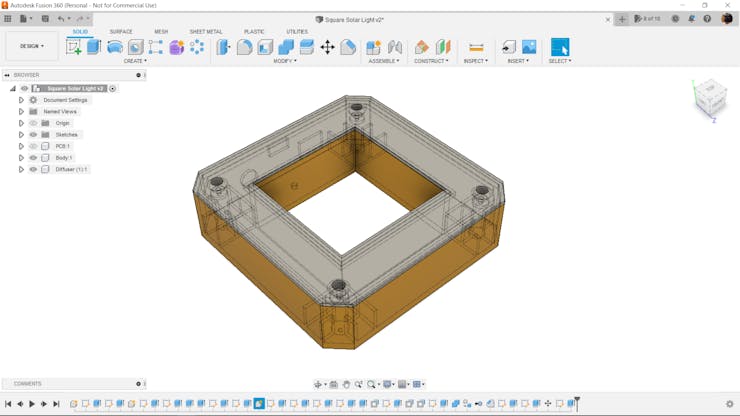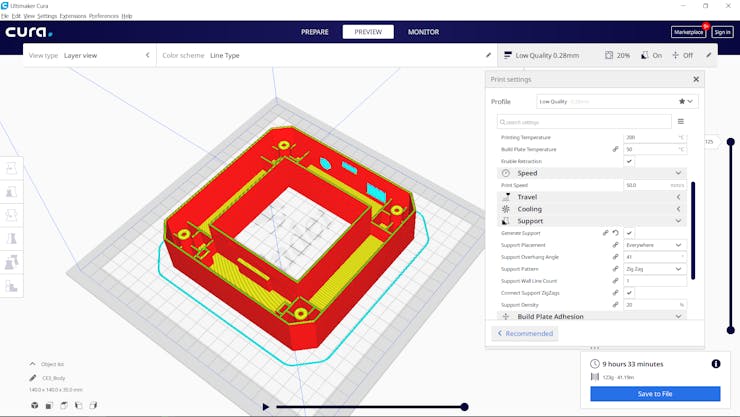
|
Autodesk Fusion 360Autodesk
|
|

|
OrCad Cadance |
Solar Powered Square Light
Hey Guys what's up.
So here's something flashy and cool.
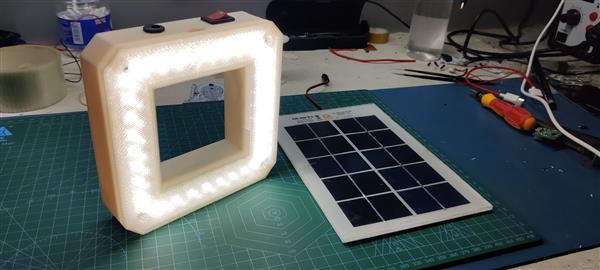
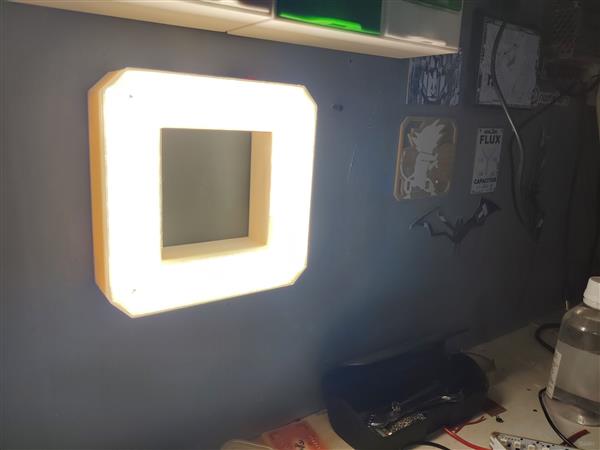
A Square shaped Solar Light which completely made from scratch.
The goal for making this was simple, I wanted to make an emergency light powerful enough for daily use. (To light up a certain area of my home during blackouts)
LEDs are all powered by a 2600mAh 3.7V Li-ion cell, I've also added a TP4056 Li-ion charging IC in this setup, and the LEDs are all driven by an AO4406 N channel Mosfet IC.
Also, this light contains a Dusk to Dawn feature which means when we plug the power IN for charging, the Main LED Light turns OFF and when we plug the charger out, it turns back ON.
this feature is essential for using this light outside with a solar panel connected, we dont have to turn ON/OFF this light daily, the solar panel will trigger this light during the day and night time automatically.
This article is about the whole built process of this light setup, so let's get started!
MATERIALS
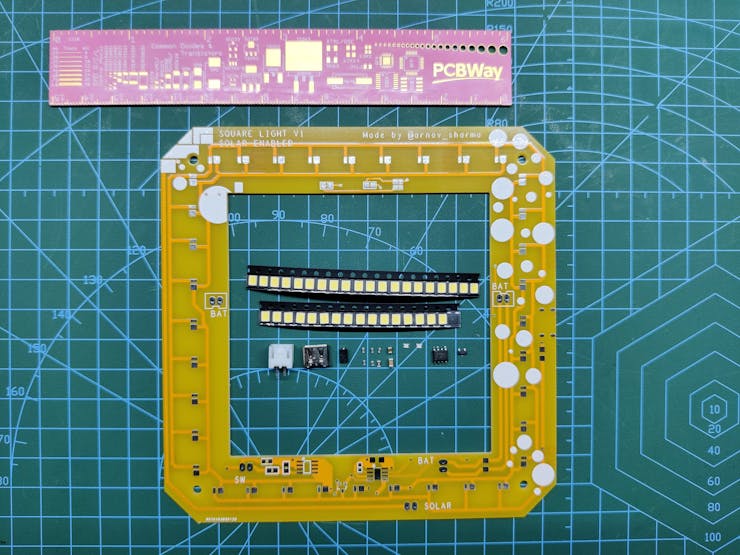
Following are the componenets I used in this build!
- Custom PCB
- 3V 1W LEDs 2835 Package
- TP4056 IC
- AO4406 Mosfet IC (N Channel)
- 1K Resistors
- 20K Resistor
- 100K Resistor
- AO3401 Mosfet (P Channel)
- Diode M7
- Type C Port
- Battery Li-ion 3.7V 2600mAh
- UC2515 Connectors
- 3D Printed Parts
PROLOGUE
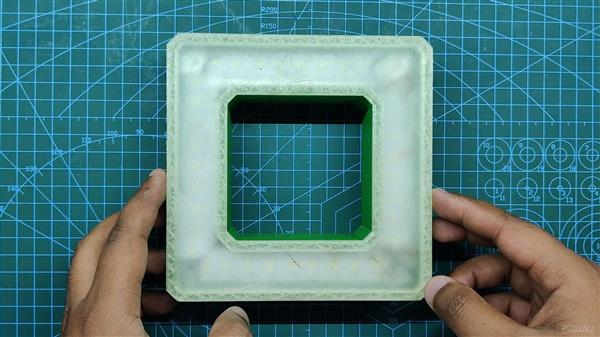
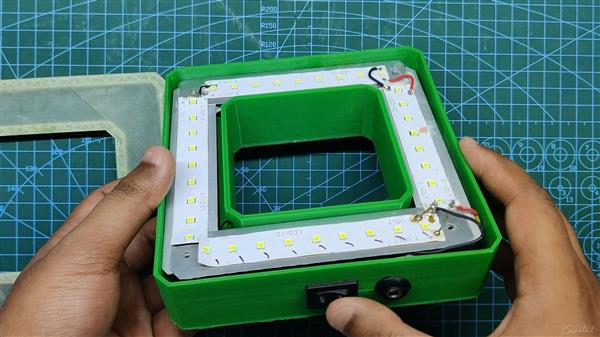
So this is how everything started, I made an emergency light last year by using a few LED strips connected with a Li-ion cell and an LED Driver.
The goal was to prepare a functional Emergency light that can be used daily in order to counter power outages, the place where I live is infamous for daily power cuts for a couple of hours.
This light worked properly and had an overall backup of 5-6 hours which was pretty sweet however because the LED setup was completely makeshift, it didnt lasted long so I decided to make a proper light by preparing a square PCB that contains LEDs with a simple LED Driving Mosfet, the system will be powered by Li-ion Cell and for charging the Li-ion cell I've added a Li-ion Charging IC that controls the overcharge and indication for charging.
The body will be made from PLA.
SCHEMATIC
_UJ21avHTem.jpg?auto=compress%2Cformat&w=740&h=555&fit=max)
Here's the schematic I prepared for the mainboard.
It contains mainly three parts, the LED Section, Mosfet Driver, and the TP4056 Li-ion Charging section.
Firstly there are a total of 36 LEDs that are all connected in parallel. each led is of 3V and 1W which means all these LEDs combined draw 36W of power but it's not ideal to provide these LEDs that much power all at once, they will burn up so Here's what I did, I added a Mosfet IC (AO4406) and used a 20K Resistor on the gate of this FET, this limited the current down to 2.7A.
We can control this FET with a Microcontroller and drop more current by providing the Gate a PWM signal of 50% duty cycle. (instead of making this Pin HIGH, we can limit the current by providing it signal of 100 or even 50 by using the analogWrite function)
Then there's the TP4056 Section that consists of the TP4056 setup, 1K resistor is added with its Set Pin in order to configure the charging current to 1A, if we reduce the resistance value, the charging current will also decrease.
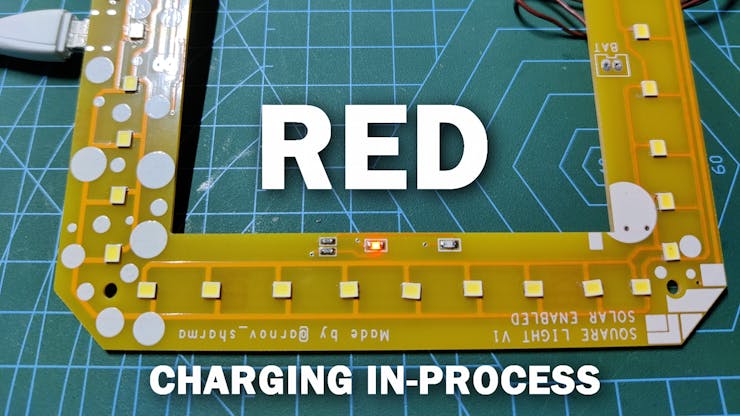
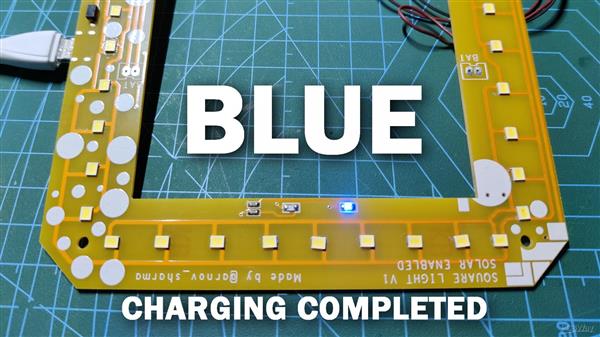
TP4056 also has an important feature that consists of two indication LEDs, During the battery charging, RED LED will glow but when the battery reached 4.2V, the RED LED will turn off and Blue LED will Glow.
USB Type C port is being used to power the TP4056 and charge the battery.
I've also added a P-channel mosfet between the battery and VCC of the system.
There's a resistor that keeps the mosfet ON as it is connected with GND, but I also added the Charging side positive terminal with the mosfet gate so when the charger plugs in, the mosfet gets OFF and the Load that is being powered by it shuts down, this feature is also known as DUSK to Dawn and its pretty commonly used in Solar based Lights and streetlights. when the solar panel stops getting power (night time) that triggers the mosfet and turns ON the power, when the sun comes up and solar power feeds power, the mosfet turns OFF and the light turns OFF as well.
I made this schematic by following the above things I mentioned and finalizing it.
PCB DESIGN
I prepared the PCB by first preparing a Square outline and placing 9 LEDs on each side of the square shape.
I placed the TP4056 along with Mosfet IC AO4406 and AO3401 on one side and placed the indicator LED on the opposite side of Mosfet.
only the Type C port has been placed on the bottom side of the board.
PCBWAY REVIEW

After completing the PCB Design, I exported its Gerber data and send that to PCBWAY for samples.
I received the PCBs in a week which was super fast.
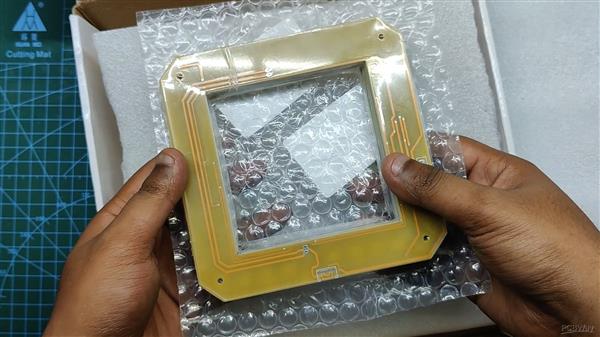
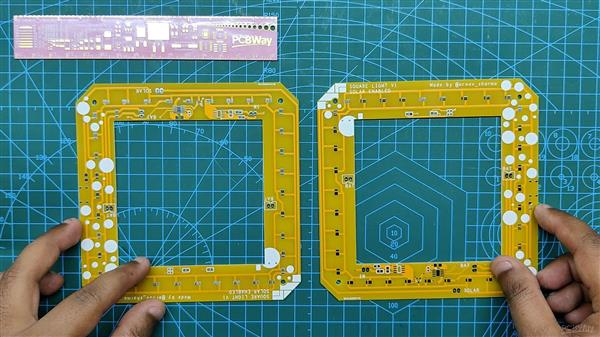
As for the quality of the PCBs, I was really Blown away by how each board was top-notch and great with no errors whatsoever.
I ordered boards in Yellow Soldermask with white Silkscreen as that would look super cool.
Overall quality was super and I recommend you guys for checking them out if you need great PCB service for less cost
.
3D PRINTED BODY
As for the 3D Printed body, my goal was to make a square-shaped box-like light so I modeled the casing for the PCB that consists of a base and lid, base will hold PCB and Lid will be the diffuser and we will use four screws to the tight lid from Topside.
I modeled this in fusion360 and then exported the 3MF files for 3D Printing.

For preparing the base, I used a 1mm nozzle with white PLA and for the lid, I used transparent PLA with the same nozzle and same setting.
PCB ASSEMBLY
the PCB Assembly Process will have the following steps.
- Solder Paste Dispensing
- Pick & Place Process
- Hotplate Reflow
- Adding Type C Port
- THT Components
Solder paste Dispensing
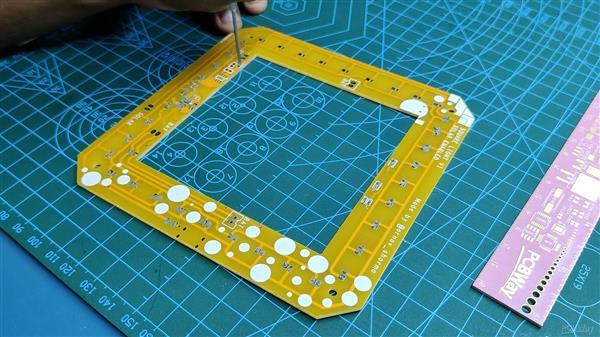
The first step is to apply solder paste to each component pad.
I used a normal Sn-Pb solder paste which has a melting temp from 140 to 270 °C.
Pick & Place Process
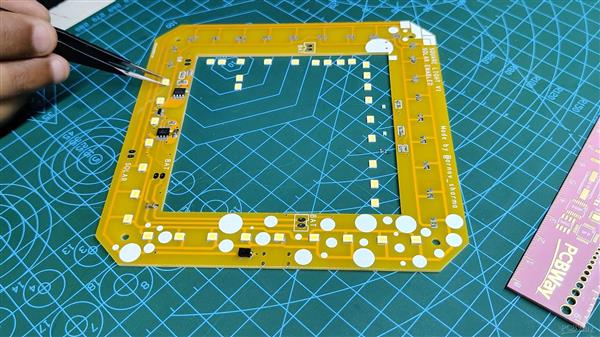
I then used an ESD Tweeaser to carefully pick and place each SMD component in their assigned place one by one which took like 30 Seconds tops but the result was a perfect PCB with all the components placed in their location.
Hotplate Reflow
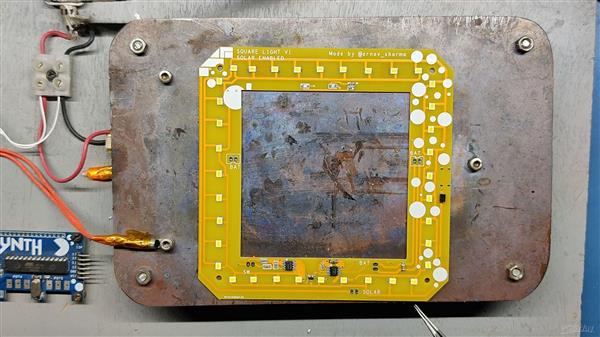
After the "PICK & Place Process", I carefully lifted the whole circuit board and place it on my DIY SMT Hotplate which is also homemade just like this project.
After a Few mins when the hotplate reaches the Solderpaste melting TEMP, all the components will get soldered by this Hot Reflow process.
We then remove the PCB from the Hotplate to cool down all componenets and board surface.
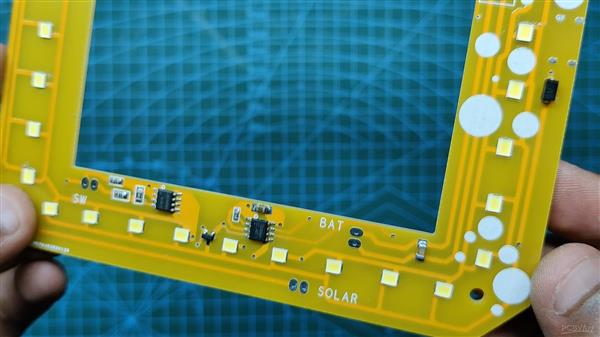
Adding Type C Port
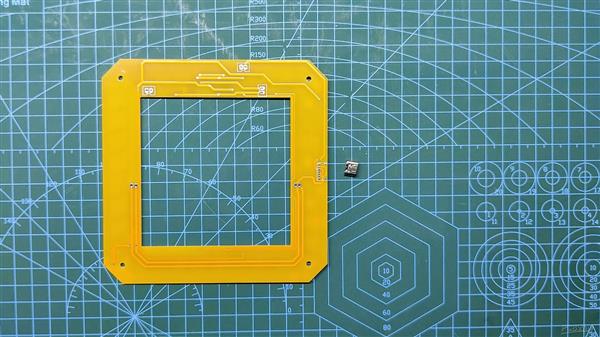
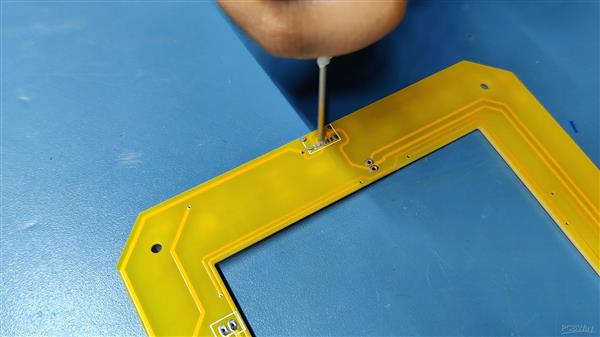
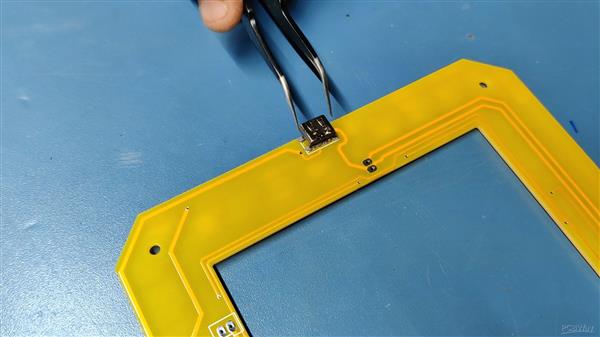
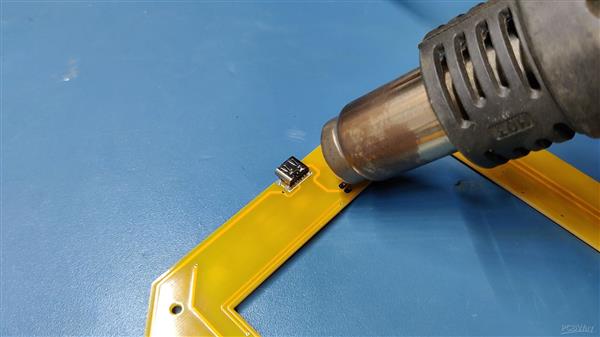
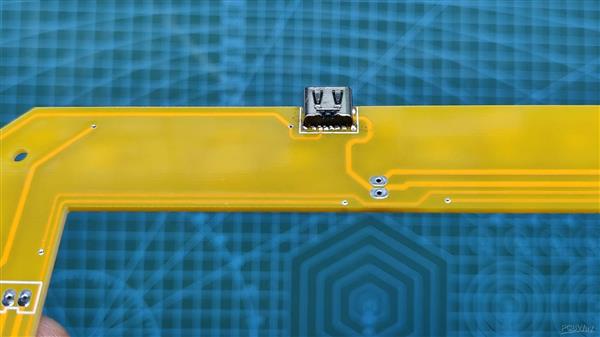
After the Hotplate reflow process of the TOP side, we add the Type C Port on the bottom side with a Reflow gun.
- First, add solder paste to the pad of the Type C port
- Then add Type C Port to its assigned location
- Use Reflow Gun to heat up the solder paste up to its melting temperature, after a few seconds, it will melt and hold down the Type C Port in its place.
THT Components
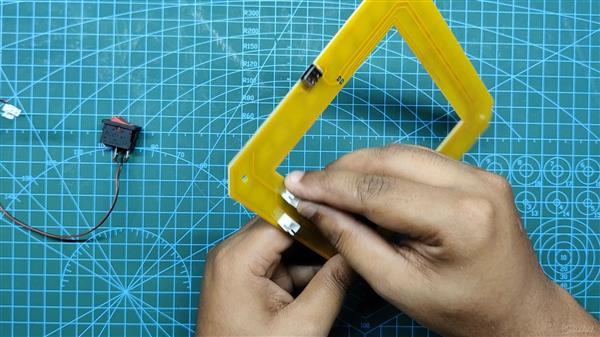
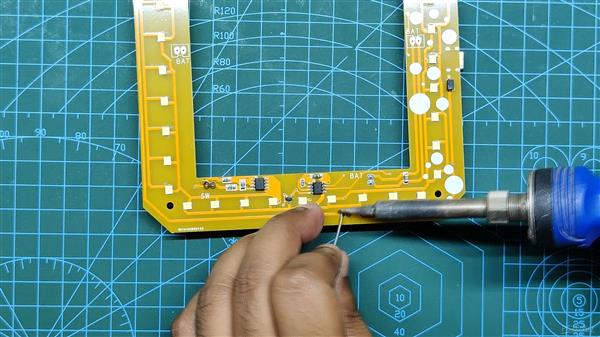
In the end, we add THT Components to the PCB, two UC2515 Connectors for solar connection, and a battery.
After doing this, the Circuit is completed!
Adding Switch and Battery
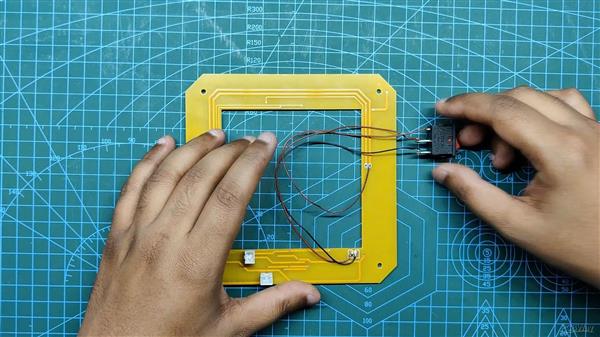
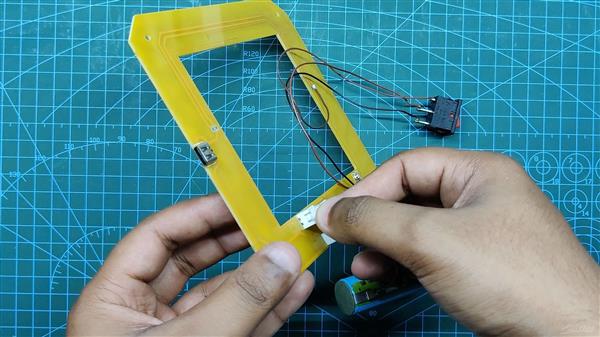
Next, I added an SPDT Rocker Switch on the circuit by soldering its middle terminal to the Gate of Mosfet, one side of the rocker switch to VCC, and another side to the ground.
By Toggling the switch Up, that connects the gate of mosfet with VCC, and by toggling it down, that connects the gate of mosfet to GND turns the whole setup OFF.
After adding Switch, I added a battery to this setup by putting the battery connector in its assigned UC2515 connector.
Result
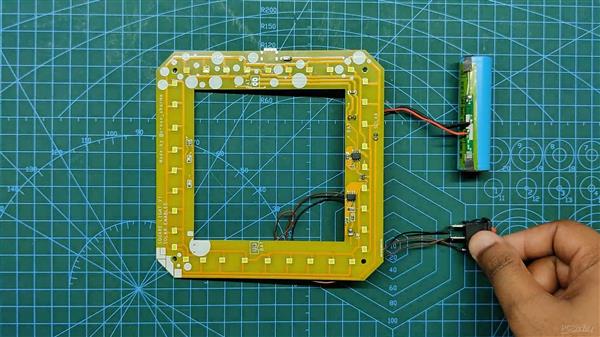

This was the result of the build so far, by toggling the switch up and down this light works.
Final Assembly
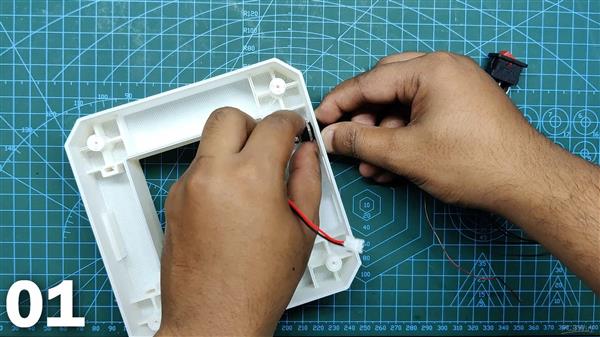
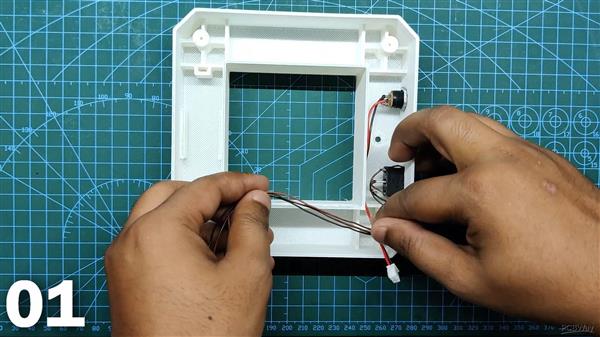



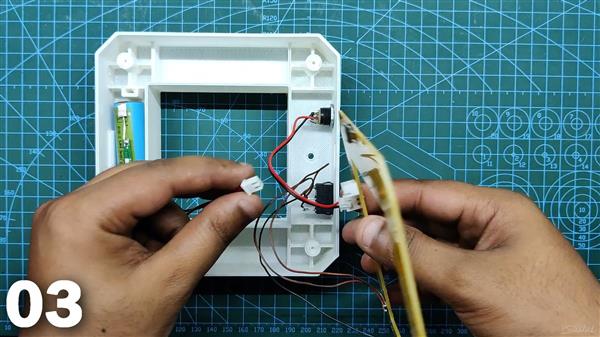
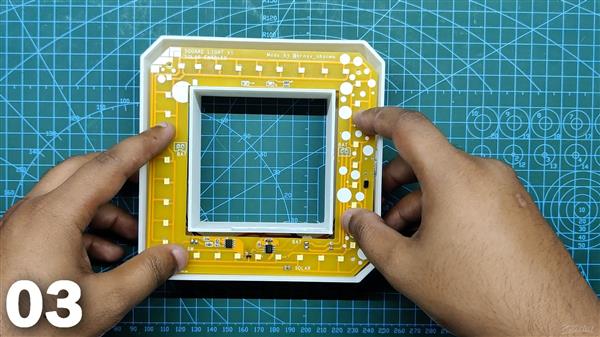

- First, we add the DC Barrel Jack and Switch in their place on the 3D Printed Base along with the lithium cell.
- Next, we add connect Switch's all three wires in their place with a soldering iron.
- Then we connect the battery's connector and DC Barrel jack connector to their assigned connectors.
- At last, we secure the circuit with the base body and diffuser by using four Screws from the top side.
Final Result
Here's the final result
Testing Process

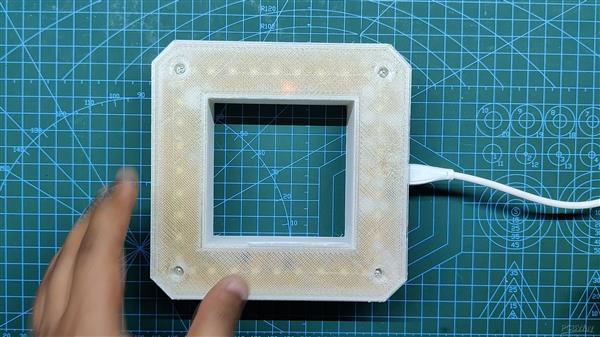
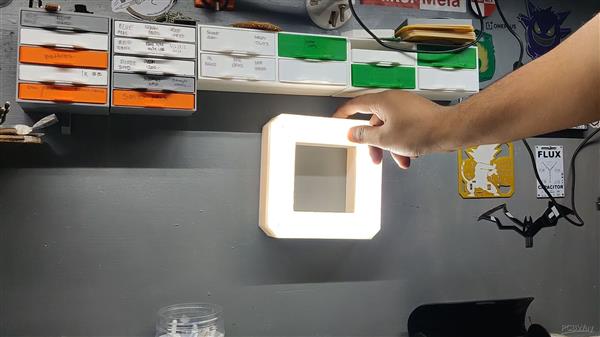
The testing process includes testing two main things, the dusk to dawn feature with a solar panel and testing the battery charging indication.
As for the backup, this light draws 2.3A at 3.3V which is around 8.9W.
The battery that I'm using is 3.7V 2600mAh so around 9.62Wh of energy it can provide, so we get a backup of 9.62/8.9 = 1.08 Hours of backup.
But because this light doesnt provide a constant current to the LEDs (as Battery voltage decreases, load current also gradually decreases) backup of this light is more than 1 hour and I've tested the backup and it's 1 hour 20 mins.
Backup can be increased by adding two more cells in parallel.
Here's a big con of this project, I forgot to add load resistors in this setup which could help step down the Power of the whole system from 9W to 5-6W, by reducing the power, the backup of the system increases.
Anyways, this was it for today folks. DM me or comment if you need any help with this project.
Also special thanks to PCBWAY for supporting this project.
DO checkout PCBWAY for getting great PCB service for less cost, and I'll be back with a new project pretty soon.
peace

Solar Powered Square Light
*PCBWay community is a sharing platform. We are not responsible for any design issues and parameter issues (board thickness, surface finish, etc.) you choose.
- Comments(0)
- Likes(0)
- 0 USER VOTES
- YOUR VOTE 0.00 0.00
- 1
- 2
- 3
- 4
- 5
- 6
- 7
- 8
- 9
- 10
- 1
- 2
- 3
- 4
- 5
- 6
- 7
- 8
- 9
- 10
- 1
- 2
- 3
- 4
- 5
- 6
- 7
- 8
- 9
- 10
- 1
- 2
- 3
- 4
- 5
- 6
- 7
- 8
- 9
- 10
 More by Arnov Arnov sharma
More by Arnov Arnov sharma
-
 Pocket SNES
Greetings everyone, and welcome back! Today, I’ve got something fun and tiny to share—the Pocket SNE...
Pocket SNES
Greetings everyone, and welcome back! Today, I’ve got something fun and tiny to share—the Pocket SNE...
-
 Batocera Arcade Box
Greetings everyone and welcome back, Here's something. Fun and nostalgic. Right now, we are using ou...
Batocera Arcade Box
Greetings everyone and welcome back, Here's something. Fun and nostalgic. Right now, we are using ou...
-
 64x32 Matrix Panel Setup with PICO 2
Greetings everyone and welcome back.So here's something fun and useful: a Raspberry Pi Pico 2-powere...
64x32 Matrix Panel Setup with PICO 2
Greetings everyone and welcome back.So here's something fun and useful: a Raspberry Pi Pico 2-powere...
-
 Portable Air Quality Meter
Hello everyone, and welcome back! Today, I have something incredibly useful for you—a Portable Air Q...
Portable Air Quality Meter
Hello everyone, and welcome back! Today, I have something incredibly useful for you—a Portable Air Q...
-
 WALKPi PCB Version
Greetings everyone and welcome back, This is the WalkPi, a homebrew audio player that plays music fr...
WALKPi PCB Version
Greetings everyone and welcome back, This is the WalkPi, a homebrew audio player that plays music fr...
-
 Delete Button XL
Greetings everyone and welcome back, and here's something fun and useful.In essence, the Delete Butt...
Delete Button XL
Greetings everyone and welcome back, and here's something fun and useful.In essence, the Delete Butt...
-
 Arduino Retro Game Controller
Greetings everyone and welcome back. Here's something fun.The Arduino Retro Game Controller was buil...
Arduino Retro Game Controller
Greetings everyone and welcome back. Here's something fun.The Arduino Retro Game Controller was buil...
-
 Super Power Buck Converter
Greetings everyone and welcome back!Here's something powerful, The SUPER POWER BUCK CONVERTER BOARD ...
Super Power Buck Converter
Greetings everyone and welcome back!Here's something powerful, The SUPER POWER BUCK CONVERTER BOARD ...
-
 Pocket Temp Meter
Greetings and welcome back.So here's something portable and useful: the Pocket TEMP Meter project.As...
Pocket Temp Meter
Greetings and welcome back.So here's something portable and useful: the Pocket TEMP Meter project.As...
-
 Pico Powered DC Fan Driver
Hello everyone and welcome back.So here's something cool: a 5V to 12V DC motor driver based around a...
Pico Powered DC Fan Driver
Hello everyone and welcome back.So here's something cool: a 5V to 12V DC motor driver based around a...
-
 Mini Solar Light Project with a Twist
Greetings.This is the Cube Light, a Small and compact cube-shaped emergency solar light that boasts ...
Mini Solar Light Project with a Twist
Greetings.This is the Cube Light, a Small and compact cube-shaped emergency solar light that boasts ...
-
 PALPi V5 Handheld Retro Game Console
Hey, Guys what's up?So this is PALPi which is a Raspberry Pi Zero W Based Handheld Retro Game Consol...
PALPi V5 Handheld Retro Game Console
Hey, Guys what's up?So this is PALPi which is a Raspberry Pi Zero W Based Handheld Retro Game Consol...
-
 DIY Thermometer with TTGO T Display and DS18B20
Greetings.So this is the DIY Thermometer made entirely from scratch using a TTGO T display board and...
DIY Thermometer with TTGO T Display and DS18B20
Greetings.So this is the DIY Thermometer made entirely from scratch using a TTGO T display board and...
-
 Motion Trigger Circuit with and without Microcontroller
GreetingsHere's a tutorial on how to use an HC-SR505 PIR Module with and without a microcontroller t...
Motion Trigger Circuit with and without Microcontroller
GreetingsHere's a tutorial on how to use an HC-SR505 PIR Module with and without a microcontroller t...
-
 Motor Driver Board Atmega328PU and HC01
Hey, what's up folks here's something super cool and useful if you're making a basic Robot Setup, A ...
Motor Driver Board Atmega328PU and HC01
Hey, what's up folks here's something super cool and useful if you're making a basic Robot Setup, A ...
-
 Power Block
Hey Everyone what's up!So this is Power block, a DIY UPS that can be used to power a bunch of 5V Ope...
Power Block
Hey Everyone what's up!So this is Power block, a DIY UPS that can be used to power a bunch of 5V Ope...
-
 Goku PCB Badge V2
Hey everyone what's up!So here's something SUPER cool, A PCB Board themed after Goku from Dragon Bal...
Goku PCB Badge V2
Hey everyone what's up!So here's something SUPER cool, A PCB Board themed after Goku from Dragon Bal...
-
 RGB Mixinator V2
Hey Everyone how you doin!So here's a fun little project that utilizes an Arduino Nano, THE MIXINATO...
RGB Mixinator V2
Hey Everyone how you doin!So here's a fun little project that utilizes an Arduino Nano, THE MIXINATO...
-
-
mammoth-3D SLM Voron Toolhead – Manual Drill & Tap Edition
169 0 0 -
-
AEL-2011 Power Supply Module
688 0 2 -
AEL-2011 50W Power Amplifier
584 0 2 -
-
-
Custom Mechanical Keyboard
786 0 0 -
Tester for Touch Screen Digitizer without using microcontroller
409 2 2 -
Audio reactive glow LED wristband/bracelet with NFC / RFID-Tags
372 0 1 -
-













